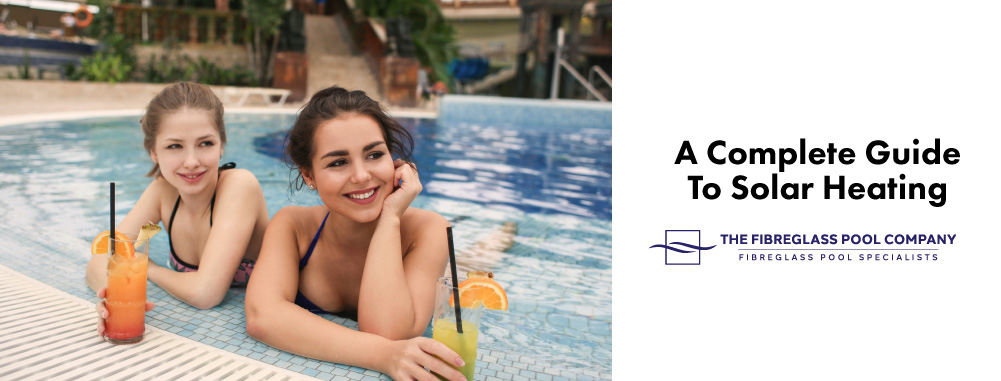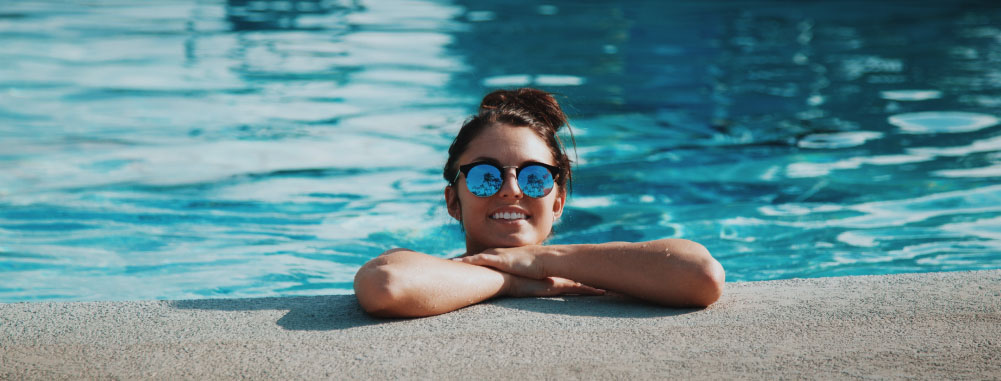When it comes to heating pool water, solar heating systems are becoming a popular choice. However, just like every other form of heating system, solar heating has its own set of advantages and disadvantages. So, before you invest in a solar heater, you must do your research to determine if it is the best option for you. In this article, you will learn about solar heating and how it works to help you make the right decision.

How do solar pool heating systems work?
Before we get into the working of a solar heating system, let’s understand its components:
Filter: Before the pool water is pumped through the solar collector, the filter removes the debris.
Solar collector: The pool water is circulated through the solar collector so that it can be heated by the sun
Pump: The pump is responsible for circulating the pool water through the collector, filter, and back to your pool.
Flow control valve: This device diverts the pool water through the collector. It can be manual or automatic.
The water from your pool is first pumped through the filter. Then, it reaches the solar collector where it gets heated. The solar collector can also be used for cooling the water during the summer months. It does so by circulating the water at night. In some systems, there is a sensor and a valve for diverting the water through the collector. The temperature of the collector is greater than the temperature of the pool. Once the temperature of the collector is the same as the temperature of the pool, the water bypasses the collector and returns to the pool.
How effective is the solar heating system?
In most cases, a solar heating system can heat your pool water around 5 to 8 degrees Celsius. In some cases, it can even warm it up by 10 degrees Celsius. However, for the actual increase in water’s temperature, you have to consider a number of factors, especially the size of the solar collector and the size of your pool. There are some other factors as well, including the pitch and orientation of your roof where the solar collectors are installed, the shade on your pool, and your roof’s construction material. Let’s get into these factors:
Pool covers: If you use a pool cover along with a solar heating system, you will be able to increase the temperature of your pool water more efficiently.
Roof construction: Compared to tile roofs, metal roofs are able to conduct heat more efficiently. Fibro roofs are a good option as well. Slate roofs are not known to be solar-friendly. It is important to note that darker roofs will be better at conducting heat than light roofs.
Solar collector area: The area of your solar collector should be 80 to 100% of your pool’s area.
Solar collector orientation: The best orientation for a solar collector is north because that’s where it will get direct sunlight for most of the time. However, even if your collector is 45ᵒ west or east of north, there won’t be any significant performance reduction. You will get the most efficient orientations on flat roofs.
Solar collector pitch: Ideally, the pitch of your solar collector should be at the same angle as your geographical latitude, plus 10 to 15 degrees. However, this is not mandatory. If you put them on the roof, the existing pitch of the roof will limit your options.
Solar collector colour: You can get solar collectors in a wide range of colours. Black is considered to be the best. However, in case you need something that complements the colour of your roof, you should increase the solar collector area.
Shading: The performance of your collectors might be impacted because of direct shading. Also, if you have shades on your pool, the temperature of the pool will be lower. To counterbalance it, you will have to add more collectors.
Winds: Compared to still areas, pools in windy areas lose more heat. So, if you live in a location that is naturally windy, you might have to install more collectors.

Benefits of installing a solar heating system
Inexpensive
Yes, the initial installation cost of a solar heating system is somewhere in the range of $3000 to $6000. However, this is an investment. You have to think about all the money you will save on running costs. Considering that, this is definitely a worthwhile investment.
Extended swimming season
Thanks to the solar heating system, you will have a continuous cycle of warm water, allowing you to enjoy your pool for a longer period of time.
Environmentally-friendly
Using a solar heating system can be great for the environment as well as there isn’t any release of hazardous waste or greenhouse gases into the atmosphere. By installing a solar heater, you are helping prevent global warming. In the case of a conventional pool heater, you have to think about the economic as well as environmental impact. It powers on electricity and is controlled by a thermostat. This is very energy consuming and will cost you a lot in maintenance.
No operating costs
Once you have installed the solar heater, the operating costs are minimal. It will pay for itself in a few years.
Increase property value
As more and more people are looking for solar upgrades in their homes, having a solar pool heating system will definitely amplify your home’s value.

It is important to remember that bigger pools need more heat. So, make sure that your solar collector is of the right size. Apart from that, you also have to focus on its position. When you are not using your pool, use a pool cover so that your pool stays at a warm temperature. If you are interested in installing a solar heating system, you should talk to a professional who can transform your backyard into an environment-friendly oasis. They will help you make the right decision regarding whether or not a solar heating system is a right choice for you. Installing a heating system is a big investment. So, do your research and talk to an expert before making a decision.

